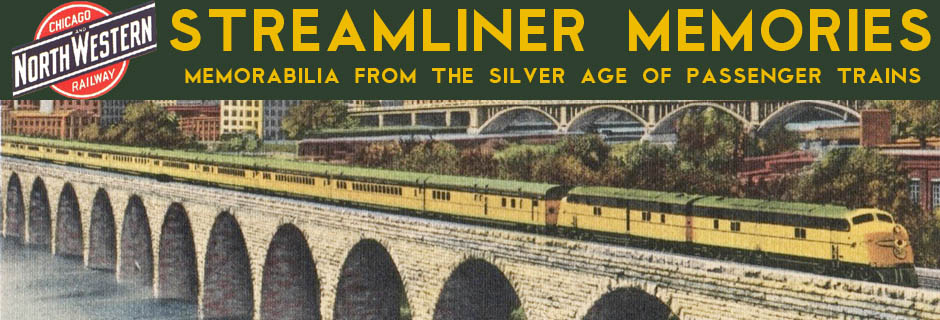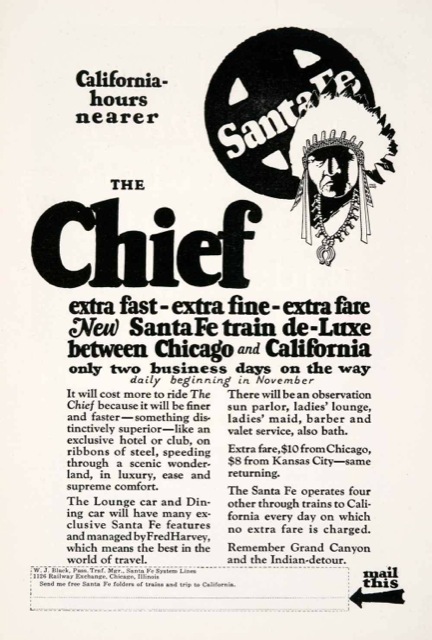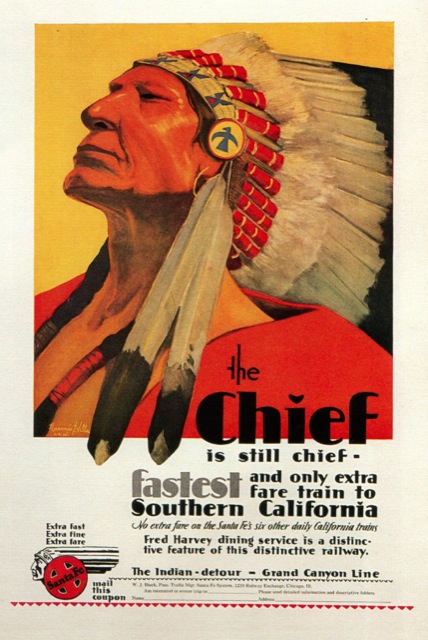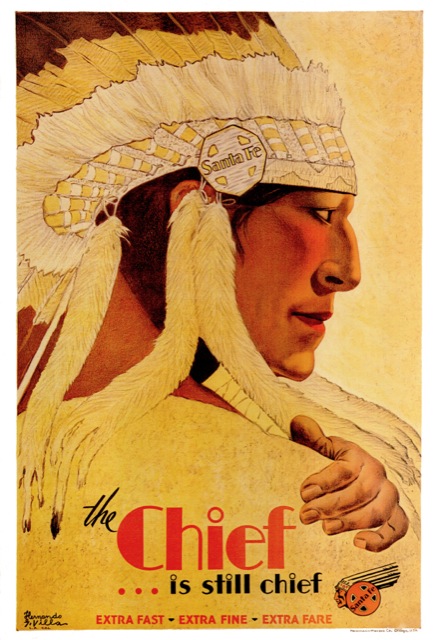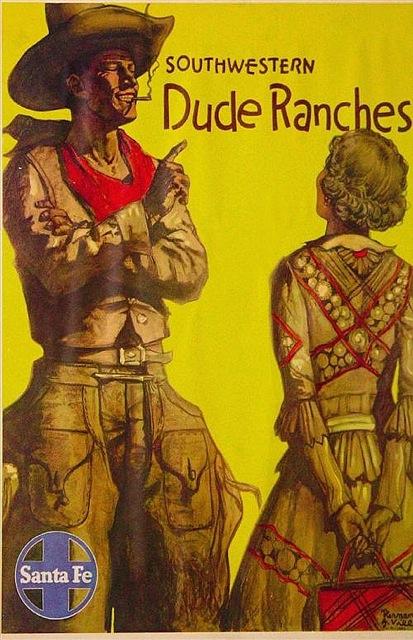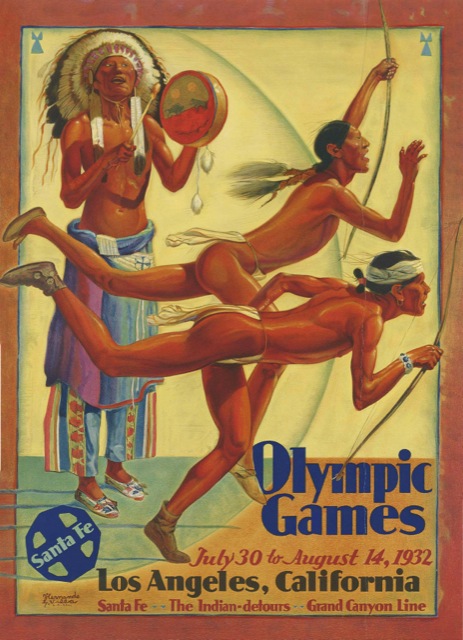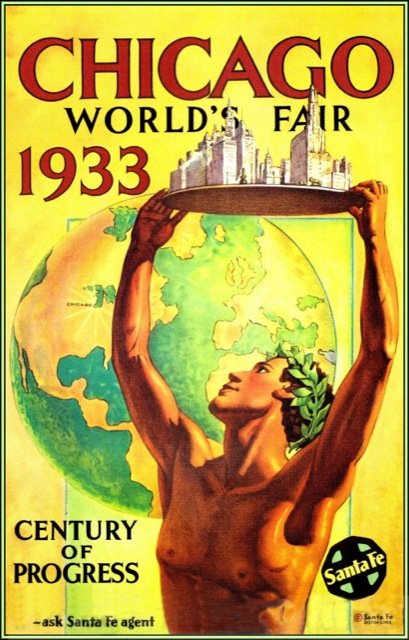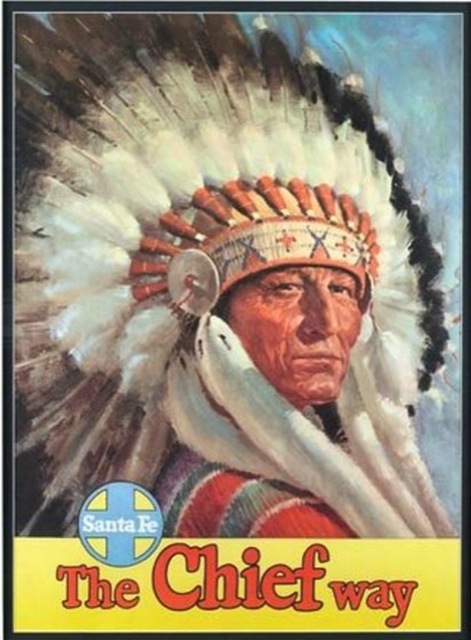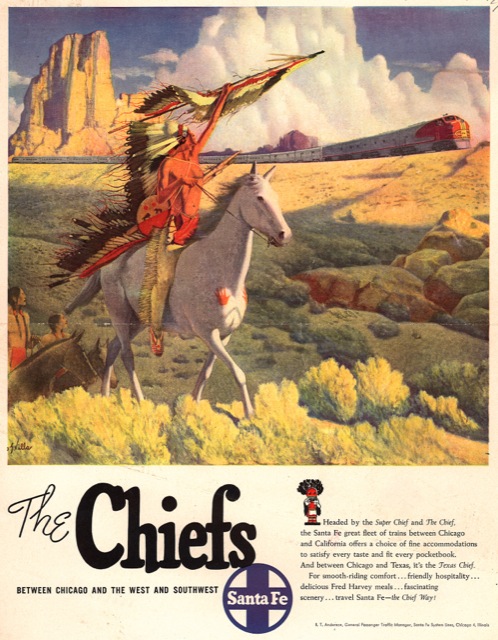Hernando Gonzallo Villa was another in the stable of artists nurtured by the Santa Fe Railway in the first half of the twentieth century. Born in 1881 in Los Angeles to parents who had moved there when California was still a part of Mexico, Villa’s father was also an artist who had a studio on the city’s plaza. Villa studied art in school, then started work for a number of businesses.
A 1926 ad for the Chief designed by Louis Treviso. Click image for a larger view.
The tale of Villa’s artwork for the Santa Fe actually begins with Louis Treviso, an artist who was born in 1889 in a covered wagon in Arizona. He designed posters for the Santa Fe before World War I and, after the war–as art director for a San Francisco advertising firm–coordinated Santa Fe’s advertising campaigns. His ads were the first to illustrate the obvious idea of an Indian in full headdress to advertise the Chief, the all-Pullman train between Chicago and Los Angeles that Santa Fe inaugurated in 1926. This “extra fine, extra fare” train cost $10 more than a sleeper on the slower California Limited, which, at about $130 in today’s money, is actually quite reasonable for a first-class upgrade.
A 1929 magazine ad based on Villa’s first painting of an Indian to represent the Chief. Click image for a larger view.
When Treviso died of Hodgkin’s disease in 1928, the Santa Fe asked Villa to paint an Indian to represent the Chief. His first sketch of “an old wrinkled Indian” was rejected; the railway “wanted a man in his prime.” The result was published as a poster as well as in magazine ads.
A 1930 magazine ad based on Villa’s next Indian painting. Click image for a 1.5-MB, 1,871×2,752 JPG.
Not all Indian chiefs wore headdresses, and not all Indians wearing headdresses were chiefs. But today the idea of someone wearing a full feathered headdress is indelibly associated with “Indian chief” in the public mind, and Villa’s paintings may be one reason for that.
A 1931 poster shows Villa’s Indian in yet another pose. Click image for a 2.0-MB, 2,441×23,573 JPG.
The Santa Fe issued numerous new posters based on Villa’s paintings. Not all were of Indians: in 1931, Villa painted a young woman gazing at a cowboy at a Southwestern dude ranch. Like the Indian paintings, this was used as both a poster and in magazine ads.
This 1931 poster presents what may then have been a typical scene at a Dude Ranch. Click image for a larger view.
In 1932, Villa did a beautiful poster for the Olympics, which took place in Los Angeles that year. The poster simultaneously reminded people that the Santa Fe went to Los Angeles and that they could take an “Indian detour” and visit the Grand Canyon on their way there.
Click image to download a larger view.
In 1933, Chicago had its “Century of Progress” fair that featured the Diesel engines and other technologies that helped inspire the first streamliners in 1934. Perhaps because the fair was in the Midwest rather than the Far West, Villa relied on the image of Greek athlete rather than a Native American on his poster advertising the event.
Click image to download a larger view.
I haven’t been able to confirm that this 1947 poster of an Indian chief was by Villa, but it seems likely as he continued to work for the Santa Fe at least through 1949. Ironically, this image of “an old wrinkled Indian” is probably more strongly associated with the train today than the younger Indians in Villa’s earlier paintings.
Click image to download a larger view.
This 1949 ad may be based on the last Santa Fe painting by Villa, who died in Los Angeles in 1952. It was issued as a poster titled “The Meeting of the Chiefs.”
Click image to download a larger view.
